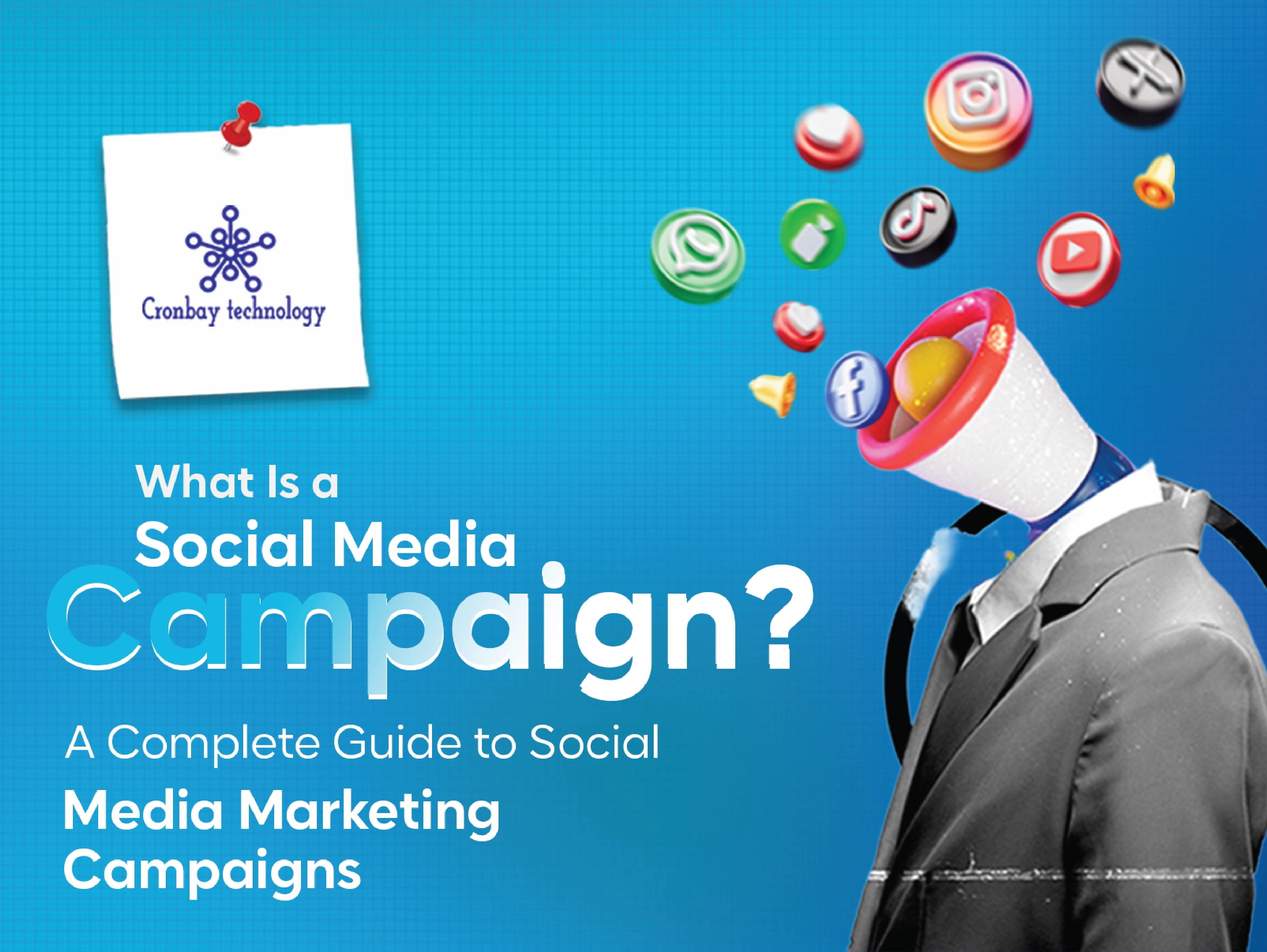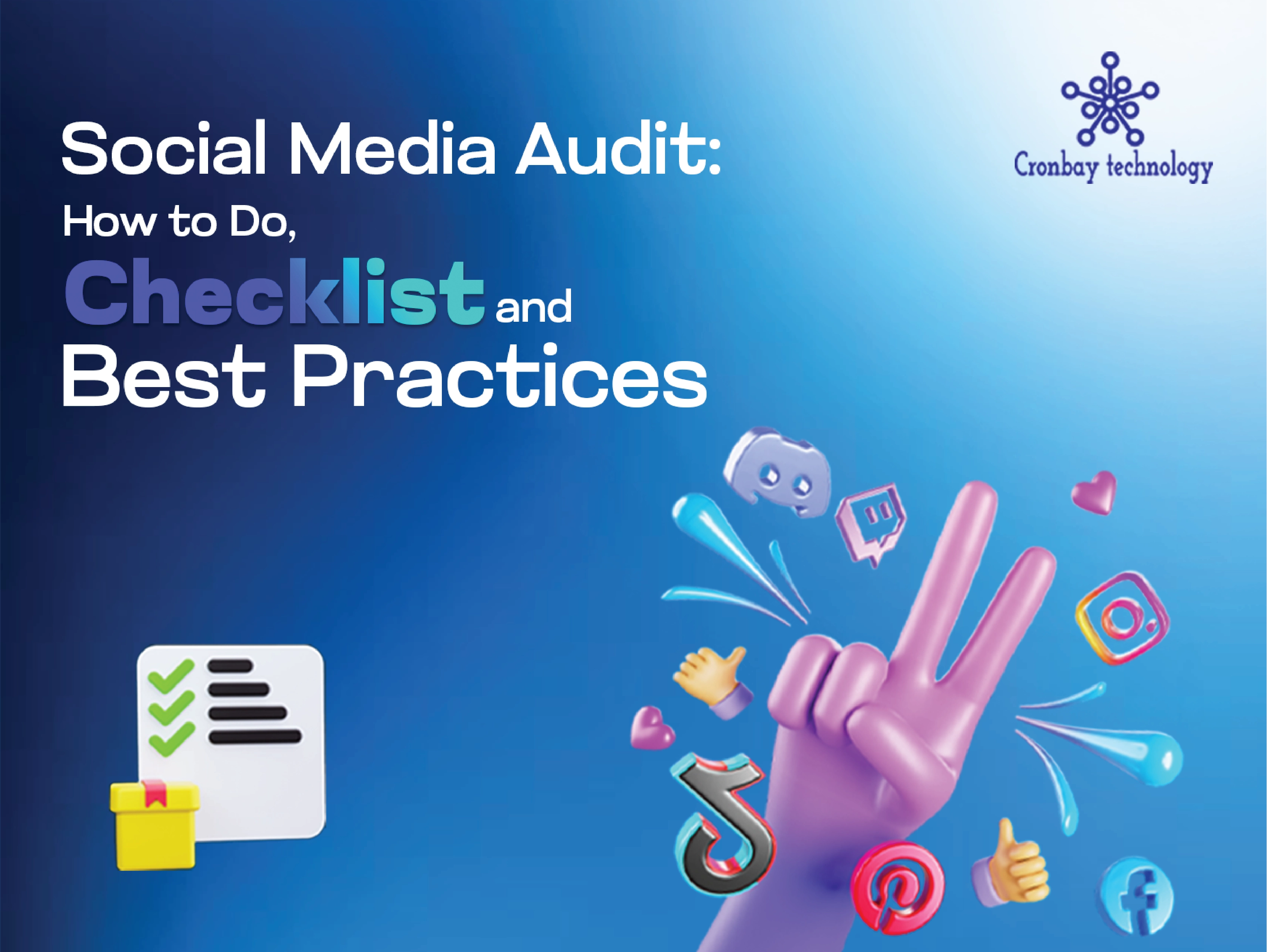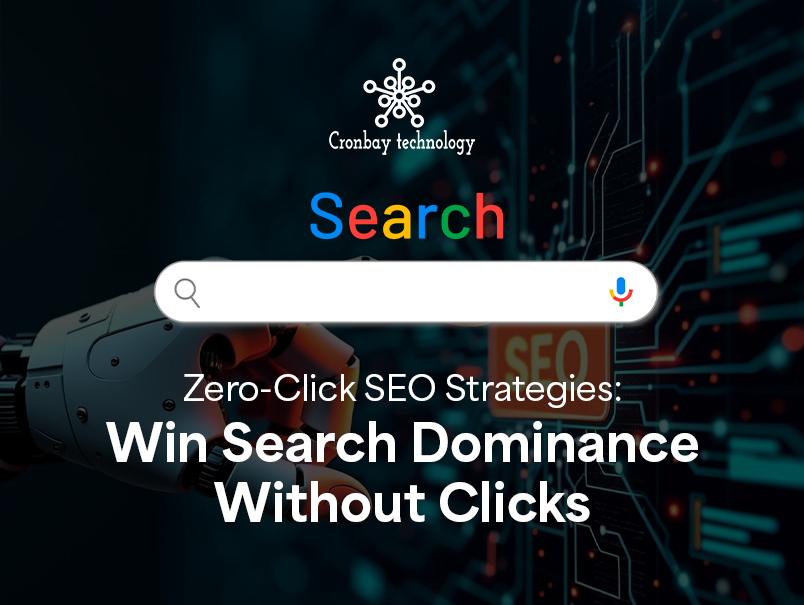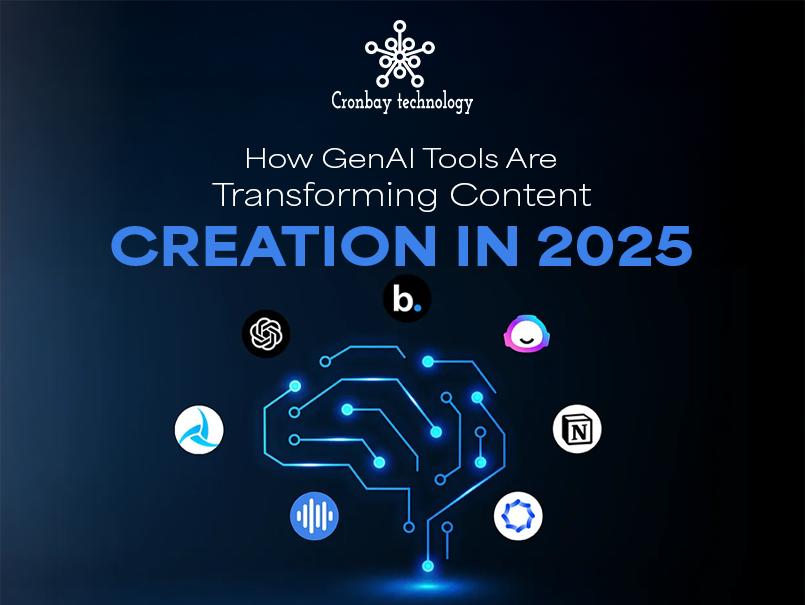Ever felt like your ads just get lost in the crowd?
Everyone is running a social media campaign these days—but here’s the truth: not all of them work. Some get clicks, many don’t.
I once saw a brand post daily, thinking “more posts = more results.” But guess what? Zero growth. Why? Because posting randomly isn’t the same as running a real campaign.
A social media campaign is like a game plan—it’s focused, intentional, and built to get people to actually take action. Whether that’s visiting your site, buying your product, or just engaging with your brand, the secret lies in strategy, not just content.
Stick with me. I'll share a quick hack that can make your campaign stand out and drive real results.
Also Check : https://cronbay-tech.com/blog/social-media-algorithm
What is a social media Campaign?
A social media campaign is an intended marketing program undertaken on one or more platforms to achieve targeted business objectives.
These aims could be to increase brand awareness, create leads, achieve traffic to your site, make sales, or enhance interaction with your audience.
How Does a Social Media Campaign Work?

The social media marketing campaign is a product of strategy, not blind luck.
To know how it functions, risk it in steps:
1. Define Clear Objectives: Start with the “why.” Would you like to increase traffic to the websites? Create awareness of a new product? Increase app installs? The whole campaign is planned by your goals.
2. Know Your Audience: Audience insights are the starting point of every successful campaign. Apply analytics to get familiar with demographics, behavior, and preferences. As an example, Instagram could be ideal to launch a fashion, whereas LinkedIn would be ideal to carry out B2B campaigns.
3. Select the Right Platforms: All platforms do not fit every campaign. Decide on the location of your target market. Combine organic posts with paid advertisements.
4. Craft Compelling Content: Your content is the core of your campaign. Be it a video, carousel advertisements, infographics, or a story, it must be appealing and make people want to engage.
5. Set a Budget & Run Ads: The majority of effective campaigns consist of an organic strategy and paid advertising. Paid advertisements enable the ability to target accurately, and therefore, your message is received by the right individuals at the right time.
6. Monitor and Optimize: Campaigns are dynamic. Measure KPIs like reach, engagement, CTR, and conversions. Optimize content, target, or spend depending on results.
In short: plan, create, promote, analyze and repeat. That is the way campaigns are done and won.
Also Read: The Rise of AI in Social Media Marketing: Top 5 AI Tools for Social Media Managers in 2025
What Are the Benefits of Using Social Media & How Does It Help Your Business Grow?
Campaigns that are well-designed offer several key benefits:
- Increase brand awareness: More individuals learn about your business, product or services.
- Improve engagement: Campaigns stimulate interactions in the form of likes, comments, and shares.
- Increase referrals: Posting on social media platforms transforms followers into paying clients.
- Present quantifiable outcomes: Analytics enable you to monitor ROI, audience actions and campaign success.
We have observed how a well-designed campaign can boost brand engagement by up to 60% in the initial three months at Cronbay Technologies. It is not merely being visible but being effective.
Related: Top 5 Benefits of Social Media Marketing for Your Business
Types of Social Media Campaigns

The various objectives require varying types of campaigns. The following are the most popular and efficient social media campaigns:
1. Awareness Campaigns:
- Goal: Expand your brand to more people.
- Example: A start-up that has generated buzz on the release of a new application.
- Tools: Instagram reels, YouTube shorts, Facebook ads.
2. Engagement Campaigns:
- Goal: Become more interactive with your audience.
- Example: Running polls, contests, or hashtag challenges.
- Tools: Tik Tok crazes, Instagram stories, X (twitter) polls.
3. Lead Generation Campaigns:
- Goal: Gather useful customer information to nurture in future.
- Example: Giving a free eBook in exchange for emails.
- Tools: Facebook Lead Ads, LinkedIn forms.
4. Conversion Campaigns:
- Goal: Converting prospects to customers.
- Example: Retargeting cart abandonment ads.
- Tools: Meta Ads Manager, Google Ads with social websites.
5. Product Launch Campaigns:
- Goal: Create a buzz about a new product.
- Example: Teaser videos and live product reveal.
- Tools: YouTube premieres, Instagram countdown stickers.
6. User-Generated Content (UGC) Campaigns:
- Goals: Increase trust and community building.
- Example: Get your customers to post pictures of your products in use.
- Tools: Story resharing, branded hashtags.
7. Advocacy Campaigns:
- Goal: Use loyal customers or influencers to disseminate your message.
- Example: Influencer partnerships with traceable links.
- Tools: influencer platforms, affiliate marketing.
A combination of these campaigns can not only help a brand build long-term relationships but also attain short-term victories.
How to Plan Your Social Campaign: Goals, Audience & Platform Choices

The planning is the difference between a successful and a failed social media marketing campaign. A considerate attitude is imperative:
- 1. Set SMART Goals: Specific, Measurable, Achievable, Relevant, and Time-bound. Rather than, get more followers, target it would be to increase Instagram followers by 20 percent in three months with targeted content and advertisements.
- 2. Define Your Audience: Utilize past campaign knowledge, analytics tools, and customer data to create audience segments. As an illustration, when you have a fashion e-commerce company, your audience could be Gen Z consumers seeking low-cost trends or busy people who are interested in high quality styling.
- 3. Choose the Right Platforms: There are no platforms that fit every business. For example: Instagram & Tik Tok are ideal in image-based and lifestyle-oriented brands. LinkedIn is the best in B2B and thought leadership. Facebook continues to be robust in terms of community building and general advertisement. X (Twitter) is helpful with **real-time** updates and trending discussions.
At Cronbay Technologies, we assist businesses in discovering the best platform to achieve their objectives without wasting resources in non-converting channels.
Also Read: The Ultimate Social Media Marketing Step-by-Step Guide for Beginners
Organic vs Paid: Social Media Campaign Advertising and Promotion

The challenge that marketers are confronted with is whether to pursue organic reach or pay in the marketing of social media using paid advertising platforms. The reality? A winning strategy is typically a combination of the two.
Organic Social Media:
- Establishes genuine community relations.
- Ideal to tell a brand story, behind the scenes content, and interacting with the brand followers.
- Inexpensive, yet coverage is restricted by platform algorithms.
- Example: A skincare range that posts tutorials, user-created content, and testimonials on Instagram Reels.
Paid Social Media:
- Includes social media marketing advertisements such as sponsored posts, carousel advertisements, and retargeting.
- Facilitates accurate targeting (age, interests, location, device).
- Moves faster and growth that can be scaled.
- Example: A Facebook Ads campaign to 25-40-year-old women interested in cruelty-free beauty products.
Hybrid Strategy:
- Use organic as brand building and involvement.
- Pay-per amplification and conversions.
- Always A/B test creative, copy, and target to make the best ROI.
At Cronbay Technologies, we are experts in devising hybrid strategies to rely on both organic storytelling and paid promotion, which guarantee businesses both short-term success and long-term building the brand.
Measuring Success: KPIs, Metrics and Optimization
A winning social media marketing campaign does not really happen through the posting of interesting content but through the quantification of the impact and constant optimization towards greater results. In the dark without tracking, you are practically flying by the seat of your pants.
The following are the main KPIs (Key Performance Indicators) and measures to be observed:
- Engagement Rate: Likes, comments, shares, and saves indicate the connections between your audience and your campaign.
- Reach and Impressions: The number of people who view your content plus the frequency of display.
- Click-Through Rate (CTR): A good measure of how your advertisements or content are interesting enough to act.
- Conversion: Sign-ups, purchases or downloads as a result of your social media marketing advertisements.
- Cost Per Click (CPC) / Cost Per Acquisition (CPA): Assists in finding out whether your campaign is cost-effective.
- Sentiment Analysis: Monitors the tone and feedback of your audience to make sure your social campaign gains a level of brand trust.
Optimization Tip: A/B testing will help you experiment with graphics, ad copy, and posting time. Do not stop improving campaigns with data--this way you have a high ROI and do not spend advertisement money in vain.
Related: Top 10 Advantages of Social Media Every Business Should Know
Real World Examples: Powerful Social Campaigns that Worked
Spot a couple of brilliant social media campaigns that prove that creativity and strategy are one and the same thing:
1. Nike: You Cannot Stop Us Campaign: Nike used user-created content and impactful storytelling to motivate us to stay strong even during a difficult period. It enhanced brand affinity and was viewed in millions of shares all around the world.
2. Spotify Wrapped: The personalized end-year campaign created by Spotify was also based on using data visualization to display habits of users in the terms of listening. It became viral on a yearly basis, making loyal customers to be brand advocates.
3. Airbnb's #WeAccept Movement: This socially responsible campaign resonated with the values of the Airbnb brand and inclusivity, generating a global discussion and gaining colossal engagement.
4. Dunkin's TikTok Challenges: Through partnerships with TikTok influencers, Dunkin' was able to attract younger audiences and achieve a massive increase in both followers and sales.
Lesson: The most effective advertising social media marketing campaigns share a story, reflect on brand values, and exploit the appropriate platform to drive the message.
Conclusion: Developing Campaigns That Make A Difference
A social media campaign is not just a series of posts, but it is a carefully designed concept that creates awareness, pushes people to action, and brings quantifiable outcomes.
Goal-setting and knowing your audience, **real-time** monitoring and KPI tracking, all are crucial steps to success.
We at Cronbay Technologies have witnessed first hand how appropriate social media marketing campaigns can change businesses. We support brands to realize sustainable growth, be it in highly targeted social media marketing ads, storytelling-based social campaigns, or both.
Willing to take your brand to the next level? Contact Cronbay Technologies now to develop strategies that can be converted.
FAQs
Frequently Asked Questions
1. What are the 5 steps in a social media campaign?
Ans. A social media campaign includes five stages, which are: Planning (goal-setting and research), Content Creation, Distribution, Monitoring, and Engagement, and Reporting and Optimization.
2. What are the steps to developing a social media campaign?
Ans. First, set clear goals, identify your target market, select the optimal platforms, design powerful content, and establish KPIs. Lastly, check performance and perfect your strategy.
3. What are the 7 Cs of social media?
Ans. 7 C's are: Content, Community, Conversation, Consistency, Customization, Conversion, and Context. They make your social media marketing campaign continue to be interesting and effective.
4. What is the cost of a social media campaign?
Ans. Prices are different based on platform, time, and advertising. A tiny campaign may run a couple of hundred dollars, whereas major advertising campaigns on social media marketing can cost in the thousands.
5. How much should a social media campaign cost?
Ans. The proportion of your total marketing budget to be spent on social media is a general rule to consider 10-15%. In the case of startups, a small budget on highly targeted social media marketing advertisements can be a good ROI.
See What's Trending in Digital Marketing World
Do you want to know what are the latest developments in the digital world? Catch the detailed insights with our latest blogs.





